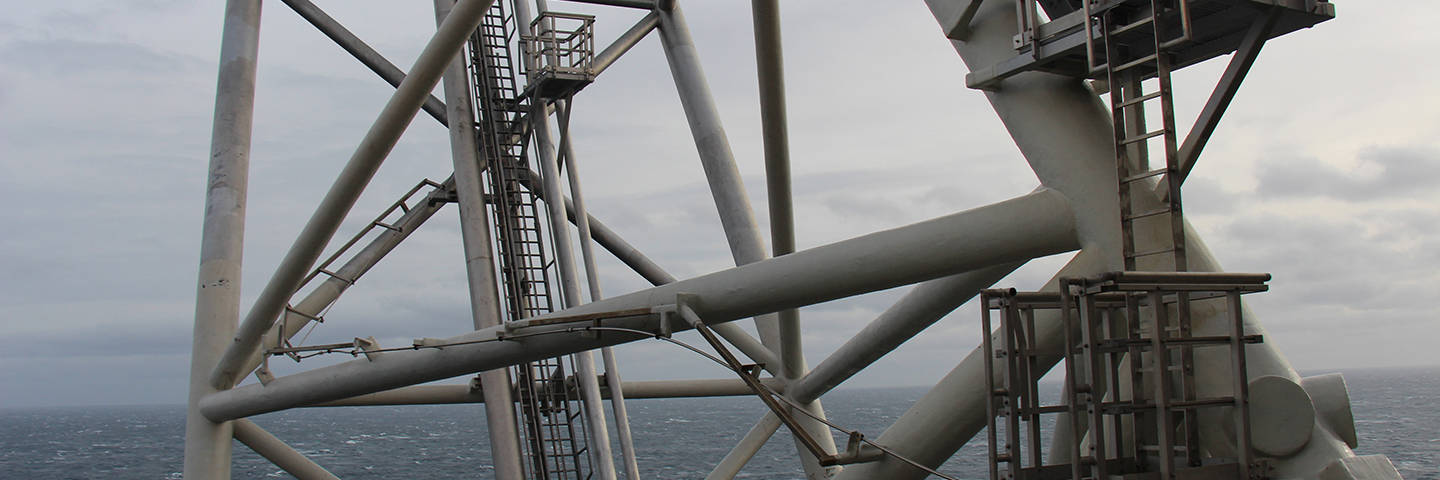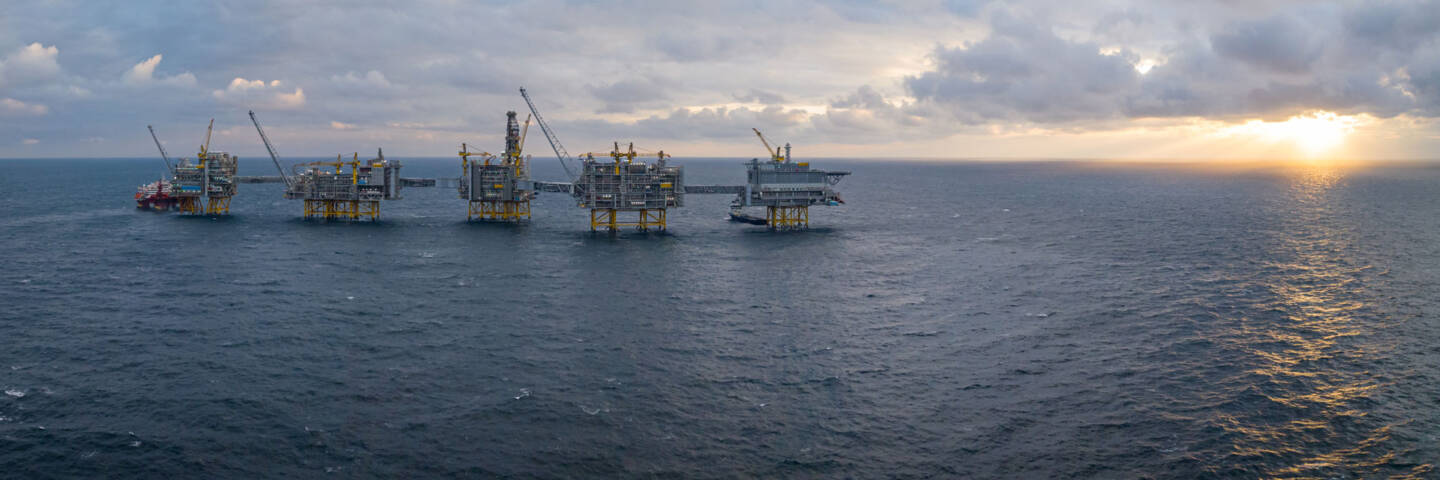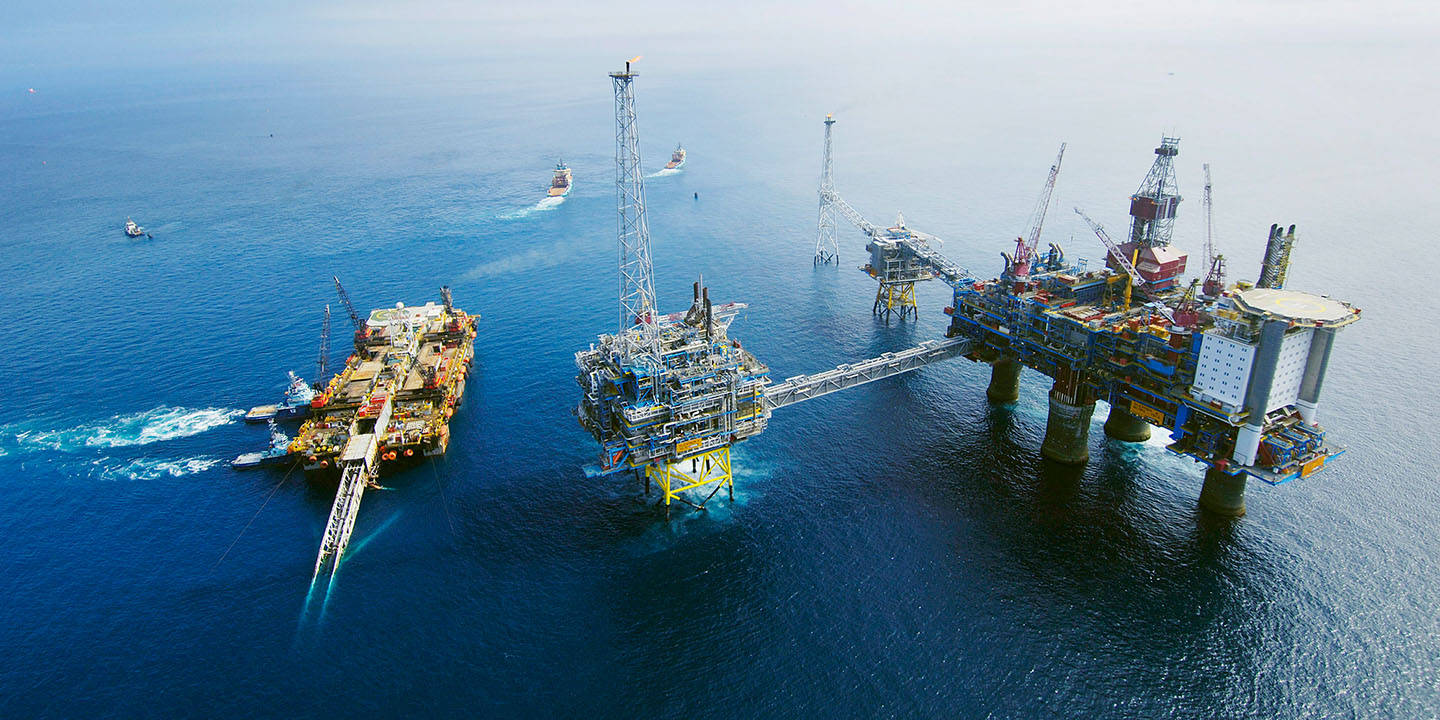Since production started on the Norwegian continental shelf (NCS) in 1971, oil and gas have been produced from a total of 123 fields. At the end of 2023, 92 fields were in production: 67 in the North Sea, 23 in the Norwegian Sea and two in the Barents Sea. Overall production from these fields was 233 million standard cubic metres of oil equivalents (Sm3 o.e.) in 2023, about 12 per cent lower than in the peak year of 2004, but at the same level as in 2022.
For the next few years, total production on the NCS is expected to be relatively stable, as the decline in production from aging fields is anticipated to be at the same level as the production from new fields that come on stream. In the long term, the number and size of new discoveries will be of crucial importance to the production level.
Gas currently accounts for around half of the total production, and this proportion is expected to continue for several years. By comparison, gas accounted for about 30 per cent of the Norwegian petroleum production in the record year of 2004.
Historical and expected production in Norway, 1970-2028
Updated: 11.01.2024
Source: Norwegian Offshore Directorate
Print illustration Download data Historical and expected production in Norway, 1970-2028 Download PDF Download as image (PNG)
High Contrast Mode
Several of the large, aging fields still have substantial remaining reserves. The activity level on producing fields will remain high in the years ahead. These fields will account for the bulk of production in the coming years. Moreover, the resource base for existing facilities increases when small, neighbouring discoveries are tied-in to the existing infrastructure.
It is possible to increase recovery from many of these fields beyond existing plans. The licensees on the NCS are continuously working on new projects to increase recovery from existing fields. It is important for the licensees to find profitable ways of improving recovery and making operations more efficient on existing fields. In addition, existing and new commercially viable discoveries need to be tied-in to existing infrastructure to utilise the production and transport capacity in mature areas in the years ahead.
See resource management in mature areas for more detailed information.
Production history and forecast distributed per resource category, 2019-2033
Updated: 11.01.2024
Source: Norwegian Offshore Directorate (Gas is normalised at 40 MJ)
Print illustration Download data Production history and forecast distributed per resource category, 2019-2033 Download PDF Download as image (PNG)
High Contrast Mode
A large number of fields are in production on the Norwegian continental shelf, and several new fields will come on stream during the next few years. It is therefore expected that the production will remain relatively high in the next decade.
See article about production forecasts for more detailed information.

Four new fields came into production in 2023: Fenja and Bauge in the Norwegian Sea, and Tommeliten A and Breidablikk in the North Sea. In addition, the development projects Frosk (as part of the Bøyla field), Kobra East and Gekko (as part of Alvheim field) and Blåbjørn (as part of Åsgard field) were completed. Furthermore, Hywind Tampen, Norway's first floating offshore wind farm, was completed and put into full operation in 2023. It is the first wind farm to supply oil and gas installations with electricity and is connected to the Gullfaks and Snorre fields.
At year-end, about 80 discoveries were, or could be, considered for development. Most of them are small and will be developed as satellites to existing fields. Stand-alone developments are planned for the largest discoveries, but several smaller discoveries could build new infrastructure through collaborated development solutions.
In 2023, the authorities approved a record-breaking number of new development projects. The largest of these projects are Yggdrasil (Munin, Hugin and Fulla) and Valhall/Fenris. In addition, plans were approved for the development and operation of Halten Øst, Tyrving, Irpa, Verdande, Symra, Ørn, Idun Nord, Alve Nord and Berling. Amended plans for the development and operation of Snøhvit Future, Maria phase 2, Draugen and Njord were also approved.
The table below shows the estimated reserves in fields under development. Please note that the table is continuously updated.
Reserves in fields under development
All volumes in million Sm³ o.e.
Source: Norwegian Offshore Directorate
Print table Download data Reserves in fields under development
At the year-end of 2023, 27 development projects were ongoing on the NCS. Of these, 15 are new field developments, while 12 are amendments to existing fields (related to increased recovery, changes to power supply or development of additional resources to existing fields). The interactive map below shows ongoing development projects. Investments are estimates from the PDO in 2022 NOK. Note that the map is not updated continuously and the geographical location on this map is inaccurate.
Johan Sverdrup is the third largest oil and gas field in the North Sea, situated 140 kilometres west of Stavanger. When the field was proven in 2010, it was the largest discovery made on the Norwegian shelf in 30 years.
The field was developed in two phases. Development of the first phase was approved by the authorities in 2015. Production from the first phase started in October 2019, nine years after the field was proven. The development solution for the first phase of Johan Sverdrup is a field centre with four facilities: living quarters and process, drilling and riser facilities. The development plan for the second phase was approved in May 2019 and the production started in December 2022. The development solution for the second phase includes a process facility and five subsea templates in addition to modifications to the riser facility.
Johan Sverdrup is operated with power from shore, together with other fields in the Utsira High area. Power from shore helps to ensure oil production takes place with low emissions to air. According to the operator, one barrel of oil produced on Johan Sverdrup during the field’s first year released 0.17 kg CO2 – which means that CO2 emissions are nearly 100 times lower than the global average.
Investments in the petroleum sector in 2023 were approximately NOK 160 billion. Several ongoing projects, both related to new field developments and to fields in operation, will contribute to an increasing activity level in 2024.
See article about investments for more detailed information.

Photo: Lizette Bertelsen/Jonny Engelsvoll / Equinor
There will be a high activity level in the industry the coming years. The petroleum industry will continue to be Norway’s largest and most important industry for the foreseeable future. New projects on fields in operation, as well as infill drilling, will result in a relatively high level of activity. In addition to the activities on existing fields, there are several new fields under development and other new projects that are expected to be decided for development.
Significant exploration activity is expected in the next few years. At the same time, many new production wells will continue to be drilled. Commercially viable discoveries are required to ensure a stable activity level in the long term, and that requires maintaining exploration activity over time.
